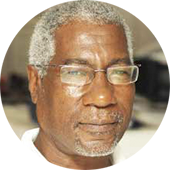
Saint Lucia’s banana story – green or ripe – though long, ought never to be forgotten.
But with elections in the air and people preparing to make their choices clear, some are willfully infusing themselves with awful bouts of voluntary amnesia that can very well change this island’s banana story.
Once ‘Green Gold’, bananas no longer bring the money and prestige they used to for banana farmers, as Europe, under American pressure, changed the rules, causing the former British colonies in African, Caribbean and Pacific (ACP) states to lose their decade-old regimes of preferential treatment and access to European Union (EU) markets.
Over six decades ago, bananas replaced sugar cane as the island’s main agricultural crop, but its demise followed the 1996 World Trade Organization (WTO) ruling that Caribbean banana exports to the UK market represented unfair competition for the US multinationals (like Dole and Chiquita) dominating the world’s banana business from Latin America…
From then, it was downhill for Windward Islands bananas — Green Gold quickly turned Bitter Yellow in short time.
Each of the island’s two main parties played major parts in nursing the banana industry and keeping it alive; and none can fairly be accused of destroying the industry in one fell swoop.
The United Workers Party (UWP) promised during the 2016 campaign to revive the banana industry’s fortunes in better ways than the Labour Administration had done over the previous five years; and immediately upon taking office, the new administration announced it was talking bananas with industry stakeholders in Martinique about gaining access to the French market.
Agriculture Minister Ezekiel Joseph last week explained the French had agreed to allow Saint Lucian fruit to enter their market, only if they met certain strict stipulated quality and standards criteria: from the size of each finger and the number of fingers on each hand, to the number of hands on each bunch, the length of the whole bunch — and the size and weight of each box.
He said Saint Lucia was unable to meet these tough guidelines agreed to, but a first shipment was nonetheless dispatched — and which was rejected.
The Minister did say government was experimenting with new banana breeds – something about our stems being allowed to grow too tall.
But even with the Taiwanese breeding dwarf breeds for bigger and better future stocks that might eventually help Saint Lucian bananas meet and fit the French requirements, they’re still not yet ready for planting.
I was therefore somewhat disappointed that the minister sounded so disappointed about the French rejecting the very disappointing first shipment.
After all, he did admit we did not meet the agreed standards and quality requirements…
Bringing bananas back on track won’t be easy and there’ll be no access to the UK or EU markets like before.
The WTO may be on its dying bed, but its rulings stand; and with Britain out of the EU from January 31, 2020, opening UK doors to Caribbean bananas is the last thing on Prime Minister Boris Johnson’s mind as he continues going bananas over how Britain will manage its divided self, post-Brexit.
With the green and yellow fruit now nothing but a source of pure banana blues, I sometimes wax in positive nostalgia about earlier pre-independence years when the likes of WINBAN scientist Dr Edsel Edmunds and radical agriculturists like Calixte George and Peter Josie spoke so glowingly of the ‘so many different things’ that could be done with bananas.
Yet, in all the banana talk(s) 40 years after Independence, we still have not seen any party or government start creating a home market for local bananas by first ensuring every child and all students eat at least one banana per day, at home and/or school.
With almost every Olympic athlete basically required by trainers to eat at least a banana every morning, the same can be done to encourage not only our professional or budding athletes, but everyone, to eat ‘at least one banana per day’.
Our bananas are no longer going to England, they’re now sold mainly in supermarkets — and by roadsides, mainly to visitors.
But with so many Caribbean islands (and countries worldwide) without enough bananas to satisfy demand, many still feel it would be better to work harder at encouraging development of a regional market for Windwards bananas, instead of agreeing to do the impossible to enter the French market — and then complaining.
The earlier-mentioned tropical agriculturists and scientists indicated the vast number of valued industrial and manufacturing products that can also be made from the fruit and the tree – from stem to roots, leaves to flowers – including the Banana Ketchup that Baron Foods so successfully introduced to Saint Lucia — and the world – through its own steam.
Banana essence is always available, but what else do we do with our bananas than cook ‘green figs’ and eat ‘ripe bananas’?
Hundreds of recipes exist for banana-based food and drinks, but apart from ‘Green Fig and Salt Fish’ what else brings our bananas to local menus?
Nouveau Cuisine Top Chef Nina Compton could join Old School-New Line cookbook author Fortuna Anthony to offer recipes that’ll send the world bonkers over bananas.
But given they are seen today by those with jaundiced views as being of less worth than a box of rejected green bananas, even such a thought might be seen by those who matter as too red-eyed — and therefore to be avoided as much as the Coronavirus.
Instead of opening-up to new visions in what is still a new century, our decisionmakers seem to prefer continuing going bananas over bananas than trying to get enough 2020 Vision to take the islands out of the old Banana Box mentality.
If so, we’ll remain stuck in that box — and we might well start singing Harry Belafonte’s Banana Boat Song, with fond memories of a time long gone away, that won’t come back another day…












